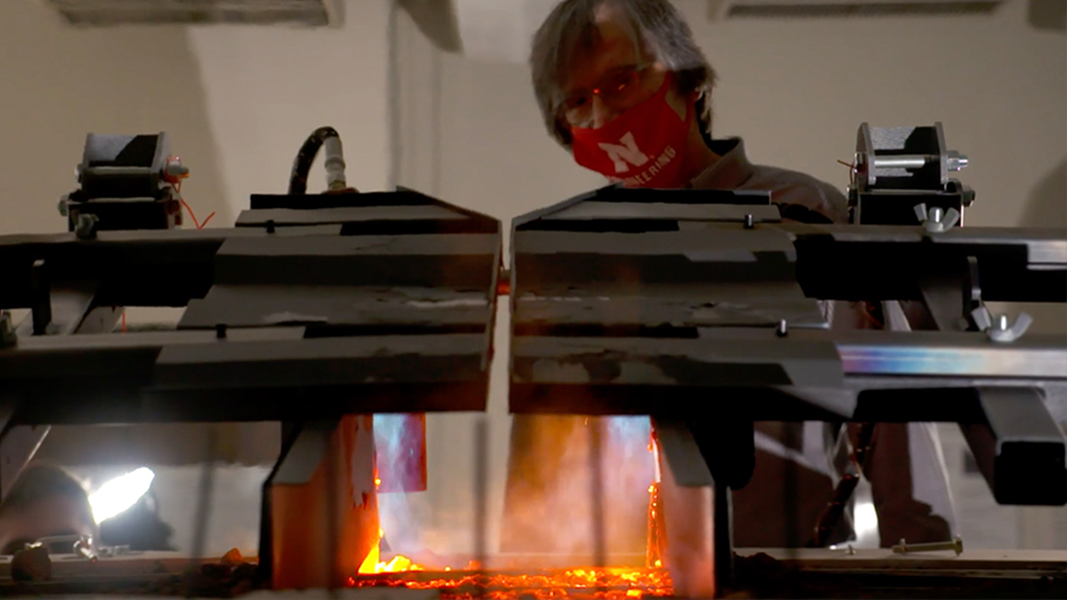Flame Weeding
Weed and insect control are critical for crop production, as weeds and insects compete for resources with the crops and therefore reduce crop yields. There are many methods used to control weeds and insects such as cultivation/hoeing and herbicides. Each of these has drawbacks that are addressed by flame weeding. Herbicides control weeds effectively, however, they have a negative environmental impact. Cultivation/hoeing is environmentally friendly, however, it fails to control weeds within the crop row. For a flame weeding system, propane torches are used to generate hot exhaust gases. The exhaust gases flow around the weeds causing damage that leads to their death. Specifically, the high temperature destroys the membranes of the cells, the cells leak water, the weeds wilt, and eventually die. At the Multiscale Heat Transfer Laboratory (MHTL), we study the temperature levels of the exhaust gases. By studying the exhaust gas temperatures, improvements can be made to the flaming system in a controlled lab environment. Field studies are conducted in collaboration with Prof. Stevan Knezevic, a weed scientist in the Agronomy Department at UNL.
